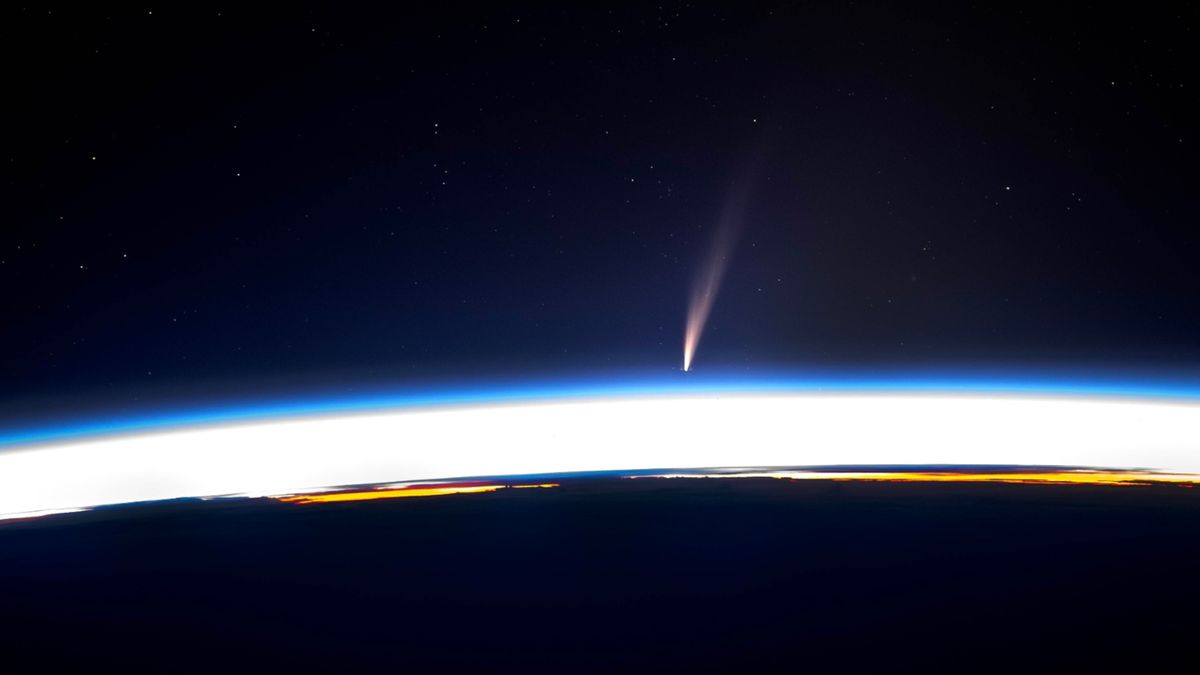An astronaut onboard the International Space Station (ISS) has snapped a stunning photograph of the super-bright “New Year comet” seemingly shooting behind Earth.
The comet, named C/2024 G3 (ATLAS), made its closest approach to Earth on Tuesday (Jan. 14) when it came within 88 million miles (142 million kilometers) of our planet. A day earlier, it reached perihelion, its closest point to the sun, which made it shine as bright as Venus in the night sky for several nights and even made it visible in the daytime in some places.
C/2024 G3 was first discovered in April last year as it began to race toward the sun. Since then, astronomers have calculated its trajectory through the solar system and found that it has a highly elliptical, or elongated, orbit around our home star. It will now head back out toward the Oort Cloud — a reservoir of comets and other icy objects lurking near the edge of the solar system — and will likely not return to the inner solar system for at least 160,000 years.
NASA astronaut Don Pettit captured C/2024 G3 “paying us a visit” in a striking photo released Jan. 11 on the social platform X. In the image, the comet’s streaming tail makes it look like it is moving beyond Earth’s horizon. The tail is made of gas and dust being blown off the comet by the sun, which is also illuminating our planet’s atmosphere from its position behind Earth, relative to the ISS.
“It is totally amazing to see a comet from orbit,” Pettit wrote.
Related: ‘Crumb trails’ of meteoroids could reveal potential ‘planet-killer’ comets years before they reach Earth
The comet is now decreasing in brightness and will become harder to spot over the next few days. However, it could still be possible to sneak a view of the icy object using a decent telescope or a pair of stargazing binoculars.
If you fancy your chances of catching a glimpse of the comet before it disappears for millennia, you can track its position in the night sky at TheSkyLive.com.
Super-bright comets
C/2024 G3 is the latest of several unusually bright comets that have passed close to Earth in the last few months.
In October last year, the “once-in-a-lifetime” comet C/2023 A3 (Tsuchinshan-ATLAS) became visible to the naked eye across the globe for weeks and grew a seemingly impossible “anti-tail” as it reached its closest point to Earth. This was Tsuchinshan-ATLAS’ first close approach for around 80,000 years and also ended up being its last, when the comet disintegrated as it passed too close to the sun.
In April 2024, we were also visited by the explosive, green “devil comet” 12P/Pons-Brooks, which unleashed multiple cold-volcanic outbursts as it passed close to Earth and briefly lost its tail to a solar storm as it slingshotted around the sun.
However, C/2024 G3 is likely to be the brightest comet of 2025, according to EarthSky.com, so we may have to wait a while to see an equally dazzling visitor from the outer solar system.


